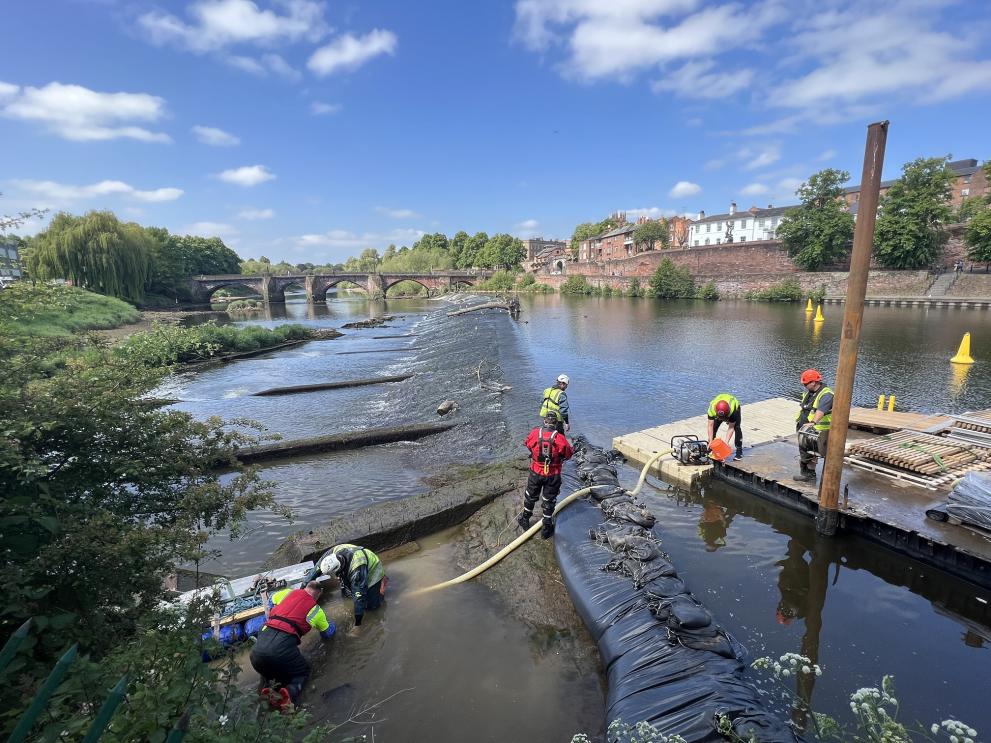
The custom-built gate was built around a notch in the crest of a weir that spans the River Dee in Chester at its tidal limit. The notch allows young fish to move up and down the river as part of the vast LIFE Dee River restoration project.
The 150-metre-long, three-metre-high Chester weir marks the river’s tidal limit and presents a significant barrier for young fish swimming downstream. The previous fish gate had been broken for 20 years, meaning young fish were often delayed on their downstream journey, particularly when water levels were low.
Just a few days after construction work was completed, video footage showing young fish passing through the notch was captured by the project team.
‘It’s fantastic to see that fish are already finding their way through the notch, showing the immediate benefits of carrying out this work,’ says Gethin Morris, Senior River Restoration Officer for LIFE Dee River. ‘River connectivity and improving access at structures such as Chester weir, is vital for the upstream and downstream migration of fish and will have a direct impact on spawning success.
Before the new gate was built, fish were often unable to swim over the weir and would gather in large numbers, making them a target for birds and larger fish. The specially fabricated stainless-steel gate is operated by a winch on the bank, allowing it to be opened and closed easily at key periods throughout the year.
‘We are delighted to see such positive results following the improvement works on Chester weir,’ says Rebecca Marsh, Environment Agency Fisheries Team Leader. ‘It is vital that fish can migrate through rivers to help support their breeding populations and provide access to sustainable habitats. The Environment Agency is committed to working with others including the LIFE Dee River project to improve the ecology of rivers and protect the local wildlife.’
The gate is part of the wider LIFE Dee River restoration programme covering more than 1,800 km2 of the Afon Dyfrdwy a Llyn Tegid/River Dee and Bala Lake Natura 2000 site, a designated Special Area of Conservation (SAC).
‘This important work will provide a safe route downstream for juvenile fish, reducing delays at the weir and increasing their chance of survival, which is crucial in our efforts to help reverse the global decline in fish populations,’ adds Gethin.
Details
- Publication date
- 24 August 2023
- Author
- European Climate, Infrastructure and Environment Executive Agency

